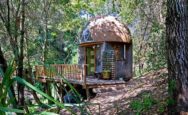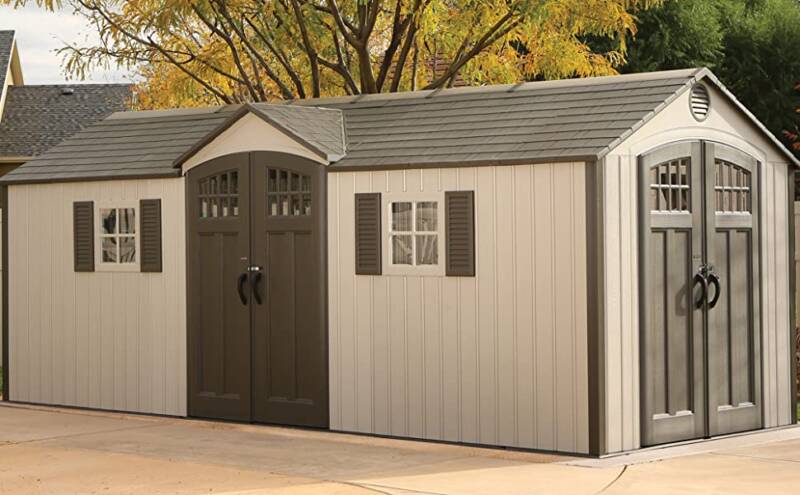
Hawaii treehouse to escape ‘The Matrix’
Robert Breton left his home in California and moved to Hawaii to ‘escape the Matrix’
He bought a plot of land for $29,850 (£24,215) and built his own two-storey home over a period of two years. He also built a greenhouse and an outhouse.
The self-proclaimed Tarzan has quit his job to live in a treehouse in the jungle in order to “escape the matrix and get in touch with nature”.
Breton, 35, originally from California, moved to Hawaii and built a treehouse with his bare hands, revealing how he “achieved his dream” on TikTok and YouTube. It’s situated just 5.5ft off the ground, is 20ft tall, 14ft by 14ft and features a functioning sink, mini fridge, shelves, a futon, and a loft that holds the “sleeping quarters”.
Breton uses two solar panels attached outside the house to provide electricity for all his tech, including his phone, his laptop and his TV.
He is also growing his own food and living entirely from rainwater, which he collects off the roof into a large 300-gallon tank, where it gets filtered and sent to faucets inside the home.
The greenhouse is where he grows his own fruits and vegetables, including green beans, broccoli, beets, lettuce, and carrots.
It means he rarely has to take the hour-long walk down to the nearest town to pick up grains and other supplements.
To stay up to date with all the latest news, make sure you sign up to our newsletter from the homepage.
The outhouse is where he has the bathroom, with a functioning sink, washer, toilet and shower — all using collected rainwater.
Breton makes money from a supplement company he founded along with his social media accounts which have gathered a big following.
He urges others to follow in his footsteps of living off the grid and quit their 9-5 jobs.
Viewers were quick to flock to the comments and share their desire to do the same, with one writing: “One day, that is gonna be me.”
A second quipped: “Beautiful and so peaceful. I hope that one day I will be like you”, while a third added: “Omg dude for real how much would it be to get a similar home to this!”
Others however slammed Breton for his off the grid lifestyle which contradicts his use of a phone and social media.
One wrote: “Not really taking a break from the matrix if you’re posting online about it are ya.”
A second added: “‘Off grid’ means no cellphones, my dude.”



 An authoritative annual survey of cash
An authoritative annual survey of cash  We’re on our way to West Virginia for a low-tech weekend at promisingly-named Lost River State Park – just across the Virginia border in Mathias, West Virginia. Its chosen not only because the park sounds beautiful, with lots of hiking trails, but because the cellphone service is spotty at best there. Plus, we’ve been told that the cabin we’ll be staying in has no WiFi, which will prevent the intrusions of work, school, social obligations, politics.
We’re on our way to West Virginia for a low-tech weekend at promisingly-named Lost River State Park – just across the Virginia border in Mathias, West Virginia. Its chosen not only because the park sounds beautiful, with lots of hiking trails, but because the cellphone service is spotty at best there. Plus, we’ve been told that the cabin we’ll be staying in has no WiFi, which will prevent the intrusions of work, school, social obligations, politics.
 Green living has gone beyond being a fad and has become an essential part of modern life. So much so that people nowadays are looking to live off the grid to pursue sustainable lifestyles, geared towards less consumption and making less of an impact on the environment.
Green living has gone beyond being a fad and has become an essential part of modern life. So much so that people nowadays are looking to live off the grid to pursue sustainable lifestyles, geared towards less consumption and making less of an impact on the environment.
 Dometic
Dometic 

